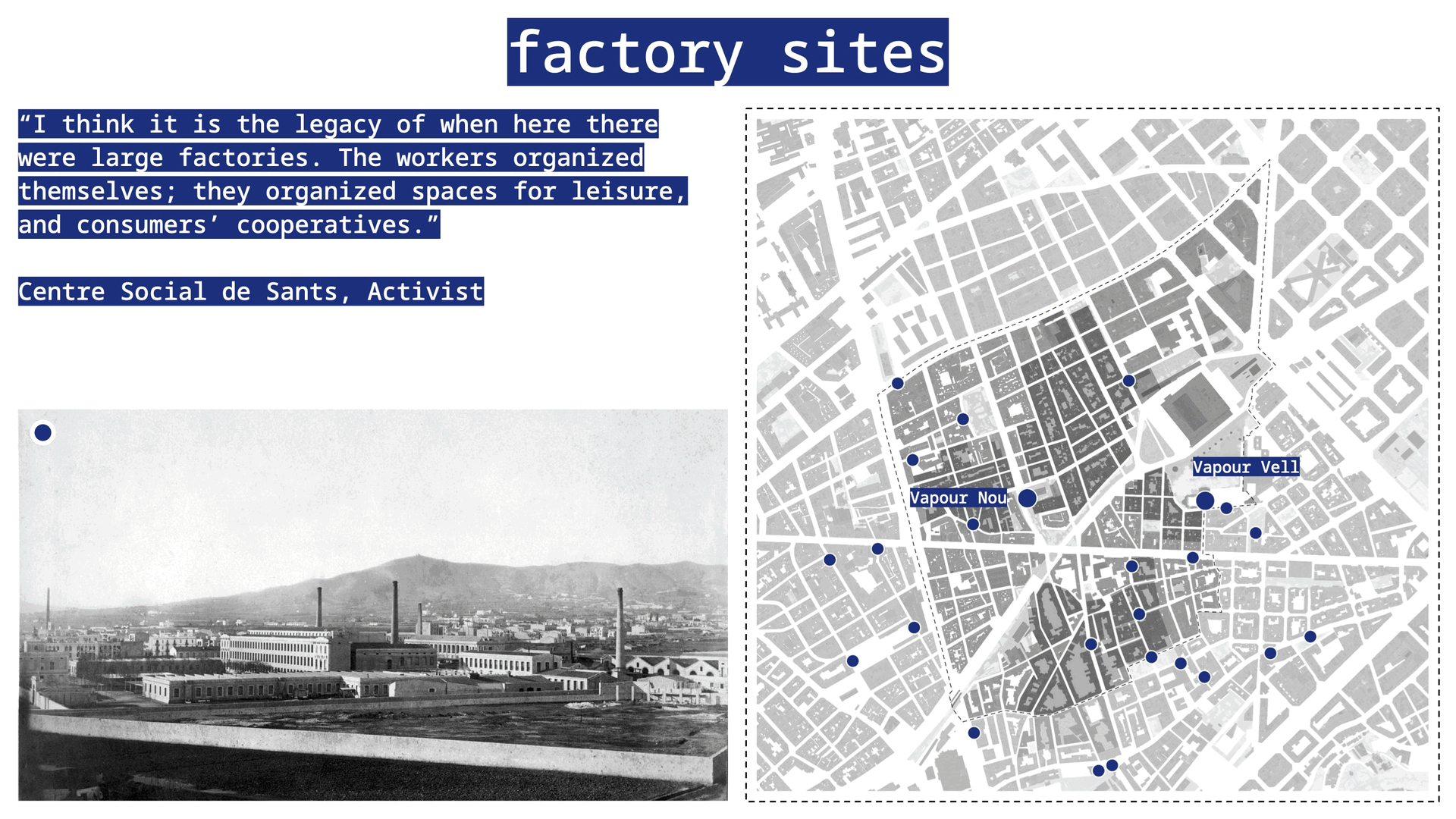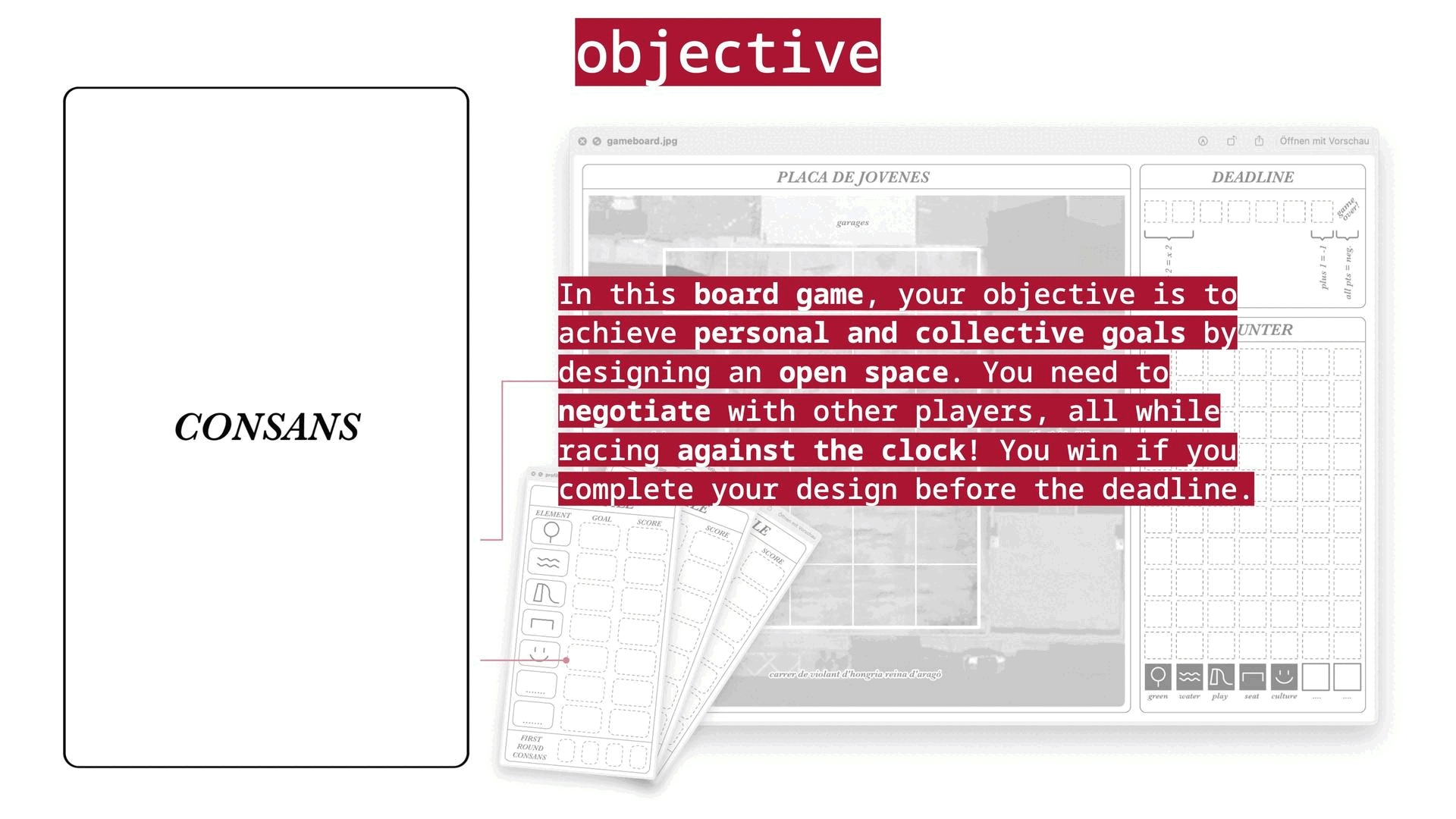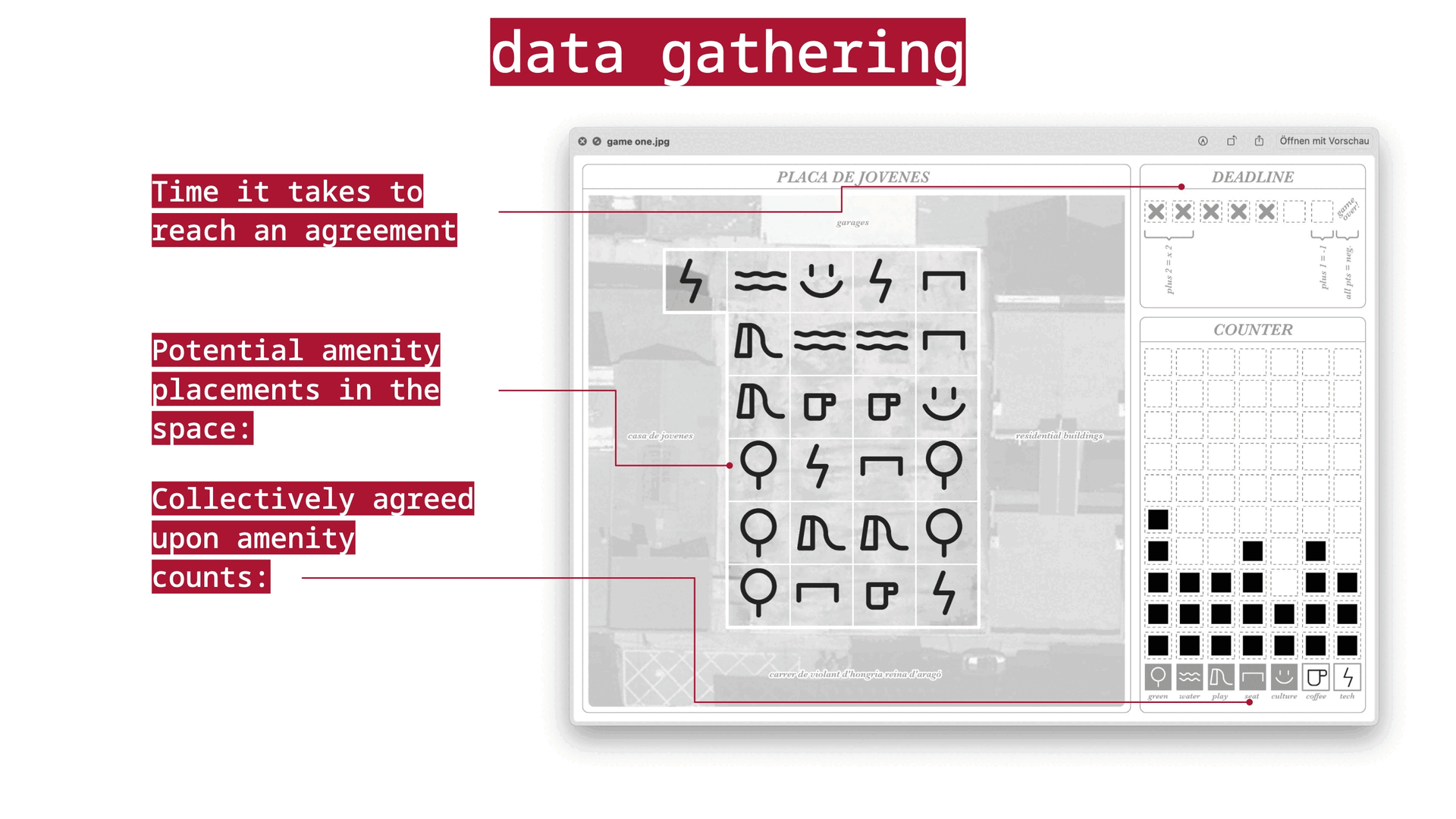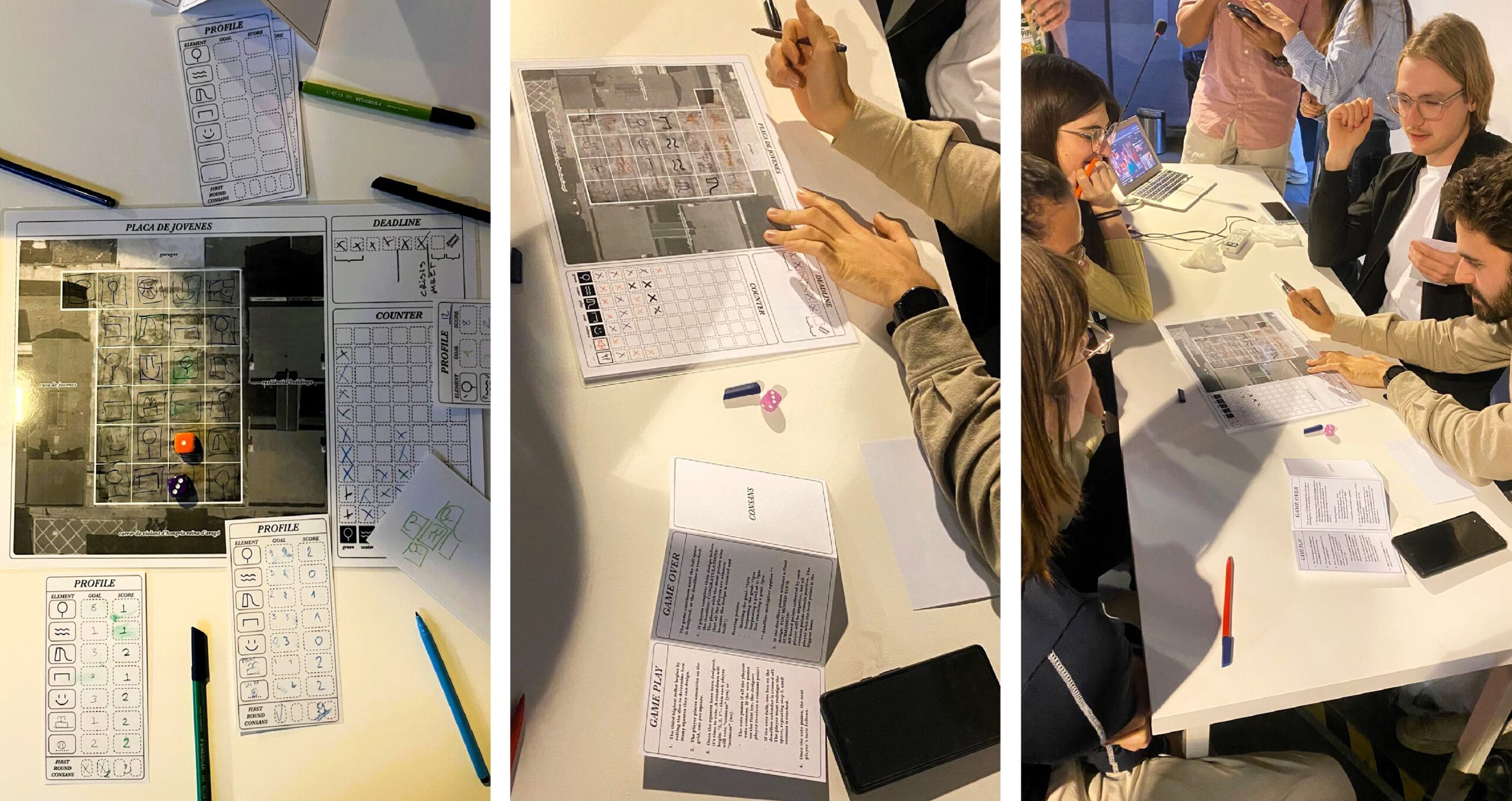This term, we have been focusing on understanding and designing public spaces in the Sants neighborhood of Barcelona. Sants has a unique identity shaped by its long-standing tradition of neighborhood cooperation and pride in its working-class roots, but has faced civic disengagement in recent years. In the studio, our objective has been to leverage public spaces to invite residents into local networks of cooperation, and see which strategies might be replicable for other neighborhoods throughout Barcelona.

In Serious Games, we were encouraged to think of games as a way to educate and inform people, solve problems, raise awareness, and reframe spaces. Our goal for our game was to develop a game that encourages players to cooperate and compromise to design a public space while allowing a facilitator to understand more about the player’s preferences for the space.
Consans is a tool to begin the planning process of a specific site. Members of local organizations, who all care about the space in question, are gathered and encouraged to begin thinking about their vision of a space and consider the priorities of others. By challenging players to compromise in an environment where they cannot have discussions, the game highlights the importance of communication and collaboration in the planning process.
To play, players first create a list of elements that can exist within the space. Five elements are standard: green spaces, water features, childrens’ play structures, seating, and cultural markers. Players invent two additional elements of their choice and weight each element based on how many they would like in the space, creating personal goals for the game. Players roll the dice, place elements on the board, and hold a vote to approve the proposed design.
Players must reach a complete consensus, or consans, in order to end the turn, redesigning proposals until a consans is reached. For every failed vote, or nonsans, the players become closer to missing their design submission deadline.
The game design went through various iterations. Originally, players raced against another entity to design the space on two competing boards, but this made the game longer and less interesting, and might encourage players to view other planning entities as enemies rather than collaborators. Therefore, we changed the game so that players race against a deadline. Another change was to allow players to choose elements for the space, allowing them to personalize the game and tailor it to the open space in question. In previous iterations, players did not need to reach a unanimous vote, but we added this rule to make compromise and cooperation a more important feature of the game.

The game is designed for three to five players, ages 13 and up. The duration of one round takes (more or less) 15 minutes, so numerous rounds can be played during a design session, perhaps asking players to play differently in different rounds.
Beyond encouraging a cooperative mindset, the game allows facilitators to better understand the players as individuals and as a collective. The individual profile cards allow a facilitator to understand which elements players feel are more important for the space, as do the wildcard elements. The board also provides important information, including where players want to place different elements on the site, as well as how many of each element were unanimously agreed upon by the end of the game.
Given the vigor of resident voices in the neighborhood, Consans leverages local engagement in a fun way that can create a path for fruitful discussions on how a space can best serve local residents.
The game is a tool to begin the planning process of a specific site. Residents and members of local organizations, who all care about the space in question, are invited together and encouraged to begin thinking about their vision of a space and consider the priorities of others. By challenging players to compromise in an environment where they cannot have discussions, the game highlights the importance of communication and collaboration in the planning process.
Not only does the game serve as a catalyst for conversations about public space use, but it also functions as a tool for collecting both qualitative and quantitative data. Insights can be gathered by observing discussions during and after the game, as well as by analyzing preferences recorded on the filled game boards and player cards.

LET’S PLAY CONSANS!


